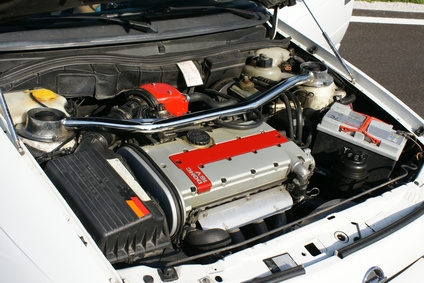
Identifying the various air conditioning components, including the low pressure hose, under the hood of a car can be challenging at first glance. Although vehicle systems have undergone major efficiency overhauls, the process remains the same. Learning to identify a few key parts will answer basic refrigeration questions, including for air conditioning systems using R-134 refrigerant.
Raise the hood of the vehicle. Look for the drive belt or fan belt. The air conditioning compressor will be driven by a belt. Identify the compressor by two, heavy, hard-rubber hoses attached to the rear body of the unit. These hoses carry the refrigerant from the evaporator, which is inside the vehicle, to the condenser, which is in front of the radiator.
Follow the path of the hoses. The smaller of the hoses leaving the compressor will go the the condenser located in front of the radiator. This is the high pressure side, where hot gas is pumped inside the condenser to cool down before it sent to the evaporator, where it cools the passenger cabin.
Locate the larger hose that is attached to the compressor. This hose allows refrigerant to flow from inside the cabin, where cooling has taken place, back to the compressor, where it is pumped out to the condenser. This large hose leading from the cabin to the compressor is called the low pressure hose.
Inspect the hoses for abrasions, cracking and nicks. Check the high pressure hose service valve and low pressure hose service valve, which are generally located on these hoses. Make sure the protective caps are secure.